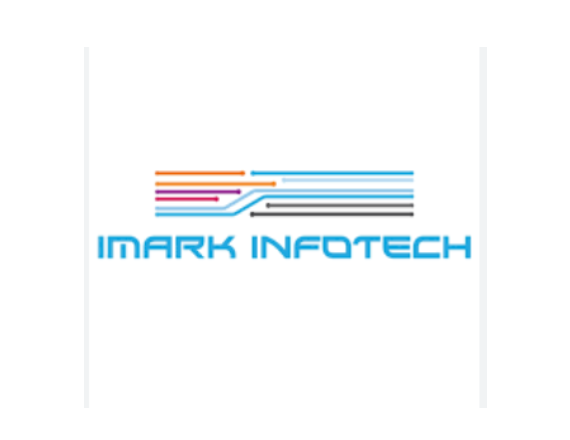Why Software Testing is Non-Negotiable for Success 🚀
As digital transformation drives businesses, software testing has evolved from a phase in development to a continuous practice. From enhancing user experience to ensuring data security, software testing is crucial at every step. Whether you’re launching a new app or updating a core system, rigorous testing can mean the difference between success and costly errors.
Testing helps to catch potential issues early, prevent critical failures, and ensure a smooth experience for users. By maintaining a proactive testing strategy, businesses can boost product quality, gain customer trust, and save on costly fixes in the future.

Core Benefits of Software Testing 🌟
Software testing brings a range of benefits that impact both the product and the business:
- Improves Product Quality 🏆
- Quality assurance ensures every feature and function performs as expected, creating a polished, reliable product.
- Increases Customer Satisfaction 😃
- When software is intuitive and bug-free, users enjoy a seamless experience, leading to higher satisfaction and loyalty.
- Protects Against Security Vulnerabilities 🔒
- Security testing identifies and mitigates vulnerabilities, safeguarding sensitive user data and building trust.
- Reduces Development Costs 💵
- Fixing issues during development is far cheaper than post-release fixes. Testing early helps reduce the need for expensive reworks.
- Builds Business Credibility 📈
- Well-tested software enhances a brand’s reputation, building trust among customers and partners alike.
Types of Software Testing: The Building Blocks of Quality 🧱
Each type of testing serves a unique purpose, addressing different aspects of software functionality. Here’s a breakdown:
- Functional Testing 🔄
- Functional testing checks if each feature works as expected, validating user commands, input/output, and business flows. This is typically the first line of defense in catching functional errors.
- Performance Testing 🏃♂️
- Performance testing ensures the software runs smoothly under various loads and conditions. Load and stress testing help verify the application’s ability to handle peak traffic.
- Security Testing 🔐
- Security testing identifies potential vulnerabilities to prevent data breaches and protect user data. This type of testing is especially important for applications handling sensitive information.
- Usability Testing 🧑💻
- Usability testing focuses on user experience, assessing ease of navigation, design appeal, and interaction flow. This helps make the software more accessible and enjoyable for users.
- Compatibility Testing 📱
- Compatibility testing verifies that the application performs consistently across different devices, OS, and browsers, especially crucial for web and mobile applications.
- Regression Testing 🔄
- Whenever updates or changes are made, regression testing ensures that the existing functionalities remain unaffected, providing a seamless user experience across versions.
- Automated Testing 🤖
- Automated testing leverages scripts and tools to speed up repetitive tasks, enhancing efficiency, accuracy, and scalability.
Steps in the Software Testing Lifecycle (STLC) 📋
The Software Testing Lifecycle (STLC) provides a structured approach to testing. Here’s how each stage contributes to the final product quality:
1. Requirement Analysis 🔍
During requirement analysis, the testing team reviews the project requirements, understanding what’s needed to meet end-user expectations and planning a comprehensive testing strategy.
2. Test Planning 📝
Test planning is about setting objectives, timelines, budgets, and determining the tools required for each testing phase. It’s the foundation for smooth and structured execution.
3. Test Case Development 🖊️
This phase involves creating detailed test cases and test scripts to guide the testing process. These test cases help ensure coverage of different scenarios and provide consistency.
4. Test Environment Setup ⚙️
A realistic test environment allows testers to evaluate software in a controlled yet practical setting, closely simulating end-user conditions.
5. Test Execution 🚀
In the test execution phase, testers run the test cases, log results, and track any defects discovered. This is where most errors and bugs come to light.
6. Test Closure 📈
In the final phase, the testing team assesses results, documents lessons learned, and confirms that all defects have been resolved.
Embracing Automation in Software Testing 🤖
Automation has become a game-changer in modern software testing. By automating repetitive and high-volume tasks, testers can focus more on complex issues, saving time and boosting productivity.
Key Advantages of Automated Testing ⚡
- Speed and Efficiency ⏱️
- Automated testing accelerates the process, enabling faster feedback on code changes and rapid deployment cycles.
- Increased Accuracy 📐
- Automation reduces human error, ensuring consistency and accuracy across multiple test cycles.
- Scalability 🔄
- Automated tools can handle extensive testing tasks, making it easier to test complex applications with multiple components.
- Cost-Effective 💸
- Automation, while requiring upfront investment, reduces the overall cost by minimizing manual testing hours and shortening release cycles.
Top Tools for Automated Testing 🛠️
Several tools are popular in the world of automated testing:
- Selenium 🌐: Widely used for web application testing, Selenium supports multiple languages and browsers.
- JIRA 🗃️: Primarily for bug tracking and project management, helping teams collaborate seamlessly.
- LoadRunner ⚙️: A tool for performance testing that simulates real-world loads, ideal for assessing application scalability.
Best Practices for Effective Software Testing 🌠
To optimize the software testing process, consider these industry best practices:
- Early Testing Approach ⏳
- Integrating testing early, or shift-left testing, allows for early defect detection, saving time and reducing later-stage costs.
- User-Centric Testing 🧑🤝🧑
- Focusing on the user experience helps ensure that the final product is intuitive and meets customer expectations.
- Continuous Testing 🔄
- In continuous testing, every development stage is thoroughly tested, enabling quicker deployment with fewer issues.
- Test Automation for Repetitive Tasks 🤖
- Automate repetitive tests to improve accuracy and efficiency, particularly useful for regression and performance tests.
- Document Test Cases and Outcomes 📑
- Documentation aids in tracking progress, ensuring traceability, and making it easier to revisit issues in future projects.
Evaluating Software Testing Effectiveness 📏
Measuring the effectiveness of software testing is essential for continuous improvement. Here are some key metrics to track:
- Defect Density 🐛
- Defect density shows the number of defects per unit of code, giving insight into code quality and test thoroughness.
- Test Coverage 🔍
- High test coverage means more code has been tested, helping ensure the application is thoroughly evaluated.
- Defect Resolution Time 🕒
- Tracking how quickly defects are resolved indicates the efficiency of the testing and development teams.
- Customer Satisfaction 🌟
- The ultimate measure of success, a well-tested application often leads to positive user feedback and higher customer satisfaction.

The Future of Software Testing: Trends to Watch 🚀
The software testing industry continues to evolve with new technologies and methodologies. Staying updated with these trends can help teams maintain a competitive edge:
- AI-Powered Testing 🤖
- Artificial Intelligence is increasingly used to enhance testing accuracy, identify patterns, and streamline defect detection, reducing manual intervention.
- DevOps and Continuous Integration 🔄
- Integrating testing with DevOps and CI/CD pipelines allows for smoother, faster releases, with testing baked into each stage.
- Cybersecurity Testing 🔐
- With rising security threats, cybersecurity testing remains a high priority, focusing on safeguarding applications against vulnerabilities.
- Mobile-First Testing 📱
- As mobile usage rises, optimizing applications for mobile is more critical than ever. Mobile-first testing ensures that apps work seamlessly on all devices.
- Test Automation Expansion 🧩
- With the push for faster deployments, more companies are adopting automation to cover a broader spectrum of testing needs.
Final Thoughts: Quality Assurance for Business Success 🏆
Effective software testing is essential to delivering reliable, high-performance applications. By employing various testing types, embracing automation, and following best practices, teams can create a robust testing framework that meets both user and business expectations. Testing doesn’t just improve product quality—it supports a brand’s reputation, customer satisfaction, and long-term growth. Embracing a proactive, quality-focused approach to testing can transform software development and drive meaningful success in a competitive digital landscape.
FOR MORE INQUIRY





Comments